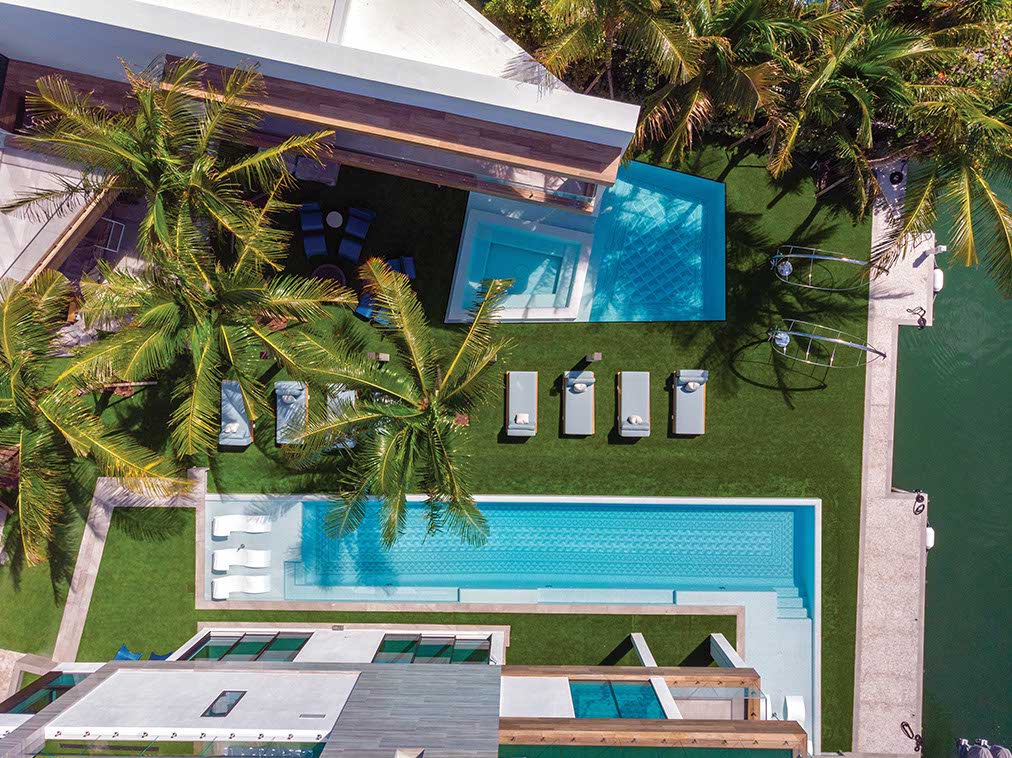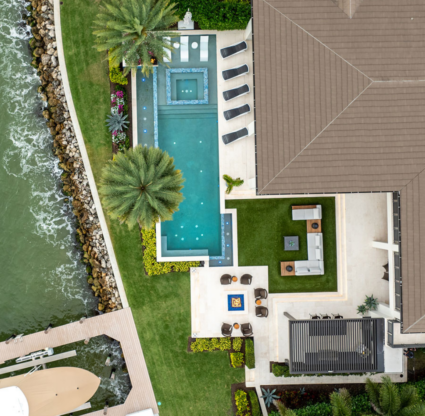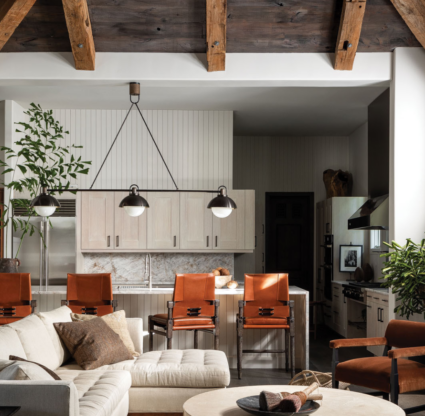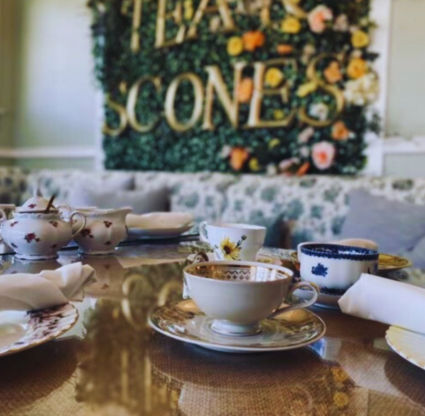Inspired by sleek, sexy resort swimming pools, homeowners now long for more drama than what’s offered by traditional in-ground designs. Enter: the residential zero-edge, or perimeter-overflow, pool. Unlike the long-popular infinity pools with one or two edges that seem to vanish into the horizon, zero-edge basins cascade freely around the entire perimeter. Often, the water flows from deck to pool in one clean line. Naples native David Young, of DWY Landscape Architects in Sarasota, says breaking down the visual boundaries of the wet edge and landscape “unifies the two more closely, as they appear in nature.”
The precursor to zero-edge—infinity pools, where the overflowing edge moves into a hidden basin that pumps water back into the pool—are thought to date to 17th-century France. In the 1960s, renowned modernist architect John Lautner leveled up the concept when he developed the knife-edge, where water and deck sit on the same level and water spills into a clean-lined slot—no visible coping or ledge.
For something edgier, perimeter-overflow pools create a sense of continuity and mystery. “[Zero-edge is] for the discerning client who’s willing to go the extra mile to do [something] unique,” Christian Andrea, of Architectural Land Design in Naples, says. As water flows smoothly on all sides, it creates a glassy, mirrored effect on the surface.
Brian Van Bower, of Aquatic Consultants in Miami, is the authority on perimeter-overflow pools. He’s written countless articles, taught classes and created the Genesis program that teaches largely on the subject, among other water feature intricacies. He notes that competitive swimming centers have long turned to perimeter-overflow pools for the reduced surface tension that allows swimmers to go faster. Waves are absorbed into the seamless gutter, and the surface remains flat. “One of the primary goals is to make a still, reflective surface,” he says.
Unlike infinity basins that rely on stunning views to seemingly disappear into, overflow pools stand out as angular, architectural presences in any backyard. The water-in-transit look and optical effect of continuity is mesmerizing when seen from ground level and looks angular and cool from an upper-floor perch.
You have two main options when it comes to achieving the zero-edge look: deck-level or raised designs. Raised pools, often used for spas, have elevated sides and water cascading over the edges. Deck-level basins sit flush at ground level, with underwater or angled edging systems or the most complex (and striking), the Lautner knife-edge method, where water disappears into precise, narrow slots and the edge meets landscaping materials. The whole thing looks like it simply sits atop the landscape, perfectly contained without walls. Brian and his team developed a more advanced ‘grass-edge’ iteration, with the knife-edge encased in softscaping. Grass or other ground cover gets planted on an angled steel plate bolted to the gutter wall, so the pool appears to manifest organically from below ground.
Edgeless designs are most popular for contemporary or modern homes—the sharp lines and clean look lend themselves to the aesthetic—but they can mesh well with most homes, depending on the style and use of materials. You might see a raised, perimeter-overflow pool lined in Sicis mosaic tile in front of a traditional manse, or a marble-wrapped deck-level basin in front of a Frank Lloyd Wright-inspired home.

David notes concrete is the most popular zero-edge decking, since the material is easy to maintain and lower cost. Meanwhile, pricier porcelain or stone tile delivers heightened elegance (there’s a reason so many resorts line their enviable oases in the stuff). David favors shellstone, like native limestone, for local flair.
Strong designers also consider the pool’s interiors. Dark tiles add to the mirrored effect, and matching the shades of the decking and tiling enhances the continuous look. Brian tiles most of his pools in glass, but he notes porcelain and stone tile are also highly resilient. “[Tile] lasts longer than most people,” he says. “I have renovated all-tile pools that were done in the ’20s, and—other than the waterline that gets worn from cleaning—they look great.”
What’s around the pool is equally important, as the mirrored surface reflects its surroundings. David often adds luxe extras like glass-clad water walls and floating decks with lounge chairs sitting atop the water (see his Sarasota School-inspired pool at the Epoch Sarasota hotel). In David’s landscapes, a pool may start under a modernist-meets-Old Florida home, with oversized shell-topped concrete pavers intermixed throughout as steps and a staircase that seems to end at the waterline. Brian likes to see outdoor sculptures or vegetation, such as palm trees, reflected in the pool (planted just far enough to not cause debris). He’s mindful of siting pools to avoid unsightly echoes, like telephone poles and power lines, or infinity views that overlook dock pilings.
Despite their cachet, zero-edge pools aren’t for everyone. They’re costly and harder to maintain. Water evaporates off the surface more than with traditional designs, as wind rolls across the surface, and they’re not as friendly for families with kids who like to splish splash. On the other hand, the water is constantly being recycled and cleaned as it flows through and gets treated in the underwater basin. Brian and his team sometimes slope the entire yard around the pool to capture any overflow and other water. “We’re essentially collecting rainwater at that point,” he says.
If you install a zero-edge pool, you’ll notice your property will seem immediately bigger. Placing the deck and water on the same level creates a sense of spaciousness. “It reads as one big plane,” Christian says. “[The effect] is very dramatic.





